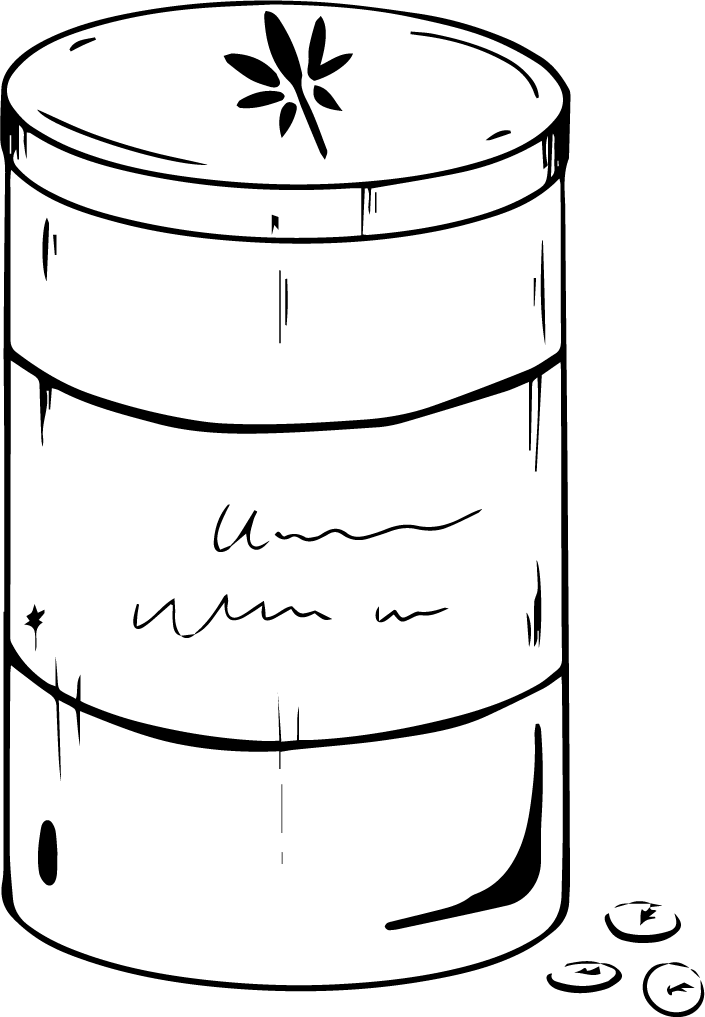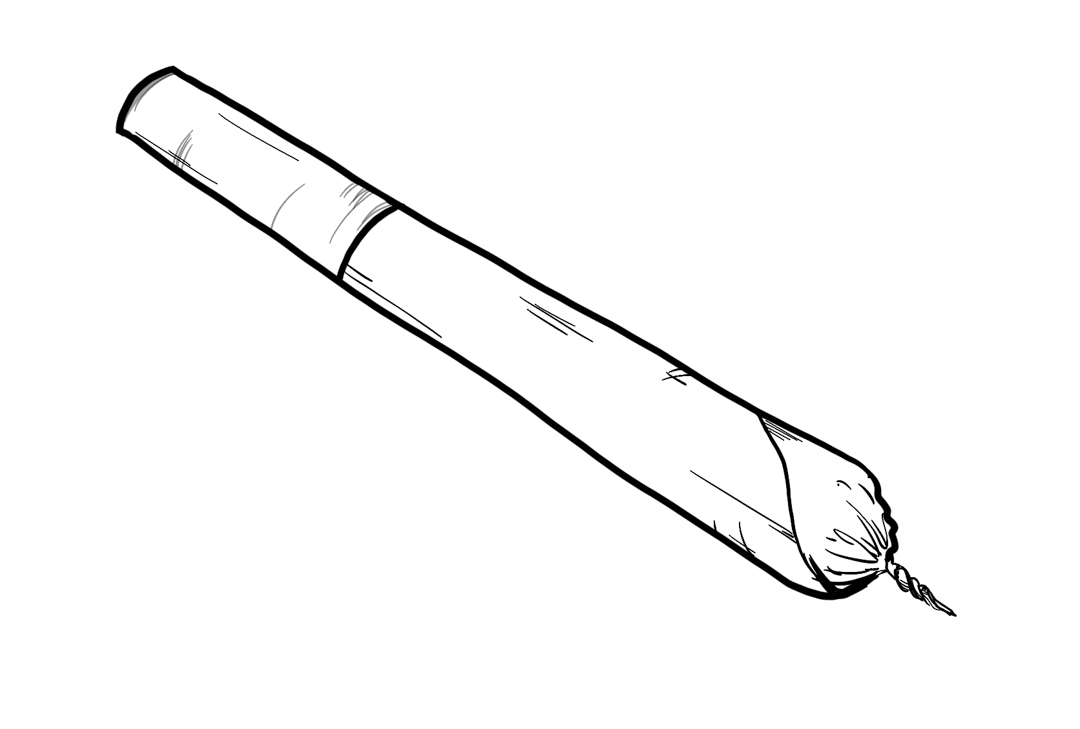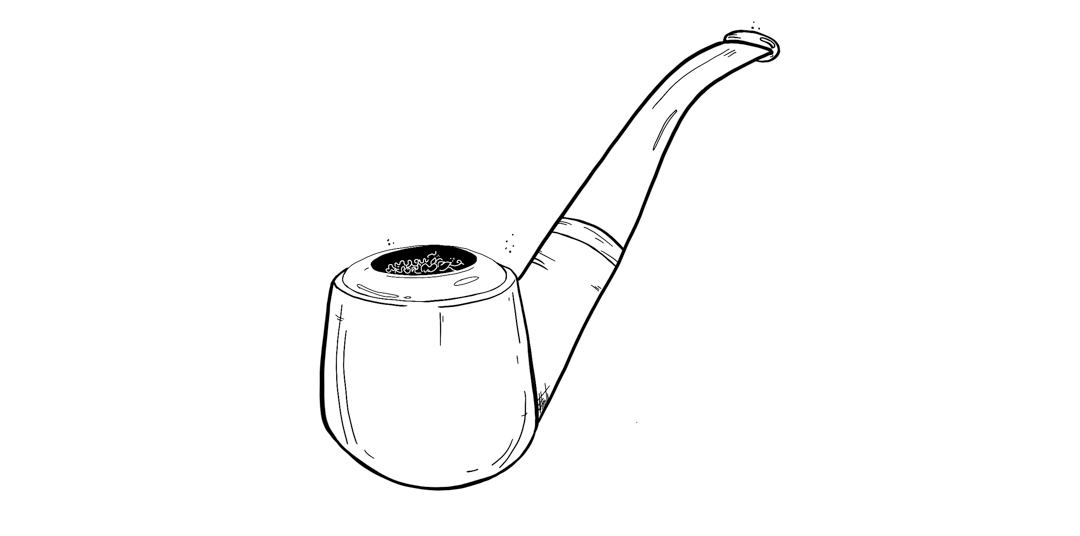On Oct. 17, 2018, Canada legalized recreational cannabis; stoners everywhere rejoiced. Canada was the second country in the world to legalize its recreational use after Uruguay first legalized it in 2013.
Market regulation, red-tape, and bureaucratic loopholes have plagued cannabis cultivators, producers, vendors, and consumers alike, but the steep learning curve is slowly flattening as legalization has taken its third rotation around the sun.
Let’s look at some of the ways the cannabis industry in Canada has grown and prospered over the last three years, what hurdles still need to be overcome, and what the future may look like for all who enjoy the jazz cabbage.
 From the legacy market to regulation
From the legacy market to regulation
The federal government knew that over 4.2 million people around the country consumed cannabis recreationally within a three month period (according to Health Canada in 2017), and they wanted their share of the profits. In the first six months of legalization alone, national and provincial governments made $186 million from tax revenues on cannabis sales. However, these initial sales were not as high as they could’ve been due to wrinkles in policies and procedures that stippled the legal market.
The first year of legal cannabis sales proved to be rough for everyone. Consumers were hesitant to make the switch from purchasing their weed from the illicit market to buying from licensed dispensaries, which can be hard to distinguish between unlicensed stores. The regulated distribution system created tight bottlenecks from producer to retailer, causing a huge rift between cannabis produced and cannabis sold. Due to all of these roadblocks, the government lost potential revenue and the illicit market continued to thrive.
Currently, B.C.’s cannabis industry pumps $2 billion a year into the economy and in a 2020 government survey, 27 per cent of survey participants aged 25+ used marijuana in the past year. Cannabis Benchmarks estimates that the illicit market accounts for 39 per cent of cannabis sales, way down from the original 91 per cent the illicit market held near the beginning of legalization. Things are looking up, as prices from the illicit market and regulated market are starting to match. Dispensaries were named an “essential service” during the pandemic in most provinces, with half of existing cannabis users increasing their consumption. The industry is only going to keep growing — creating hundreds of thousands of jobs, millions in tax revenue for communities, and billions in overall economic growth.
Dylan King, founder and CEO of cannabis brand Pistol and Paris, has been growing weed himself since he was a teenager. He remembers when not too long ago he had to peek out the blinds to see who was driving past his home, as the Lower Mainland was known for being bad for “rips,” i.e. home invasions by the police on suspected grow-ops. He expressed the relief he feels of now being able to freely conduct business meetings in public, talking freely with buyers about shipping a hundred kilograms of weed somewhere, and looking at bud while sitting at a restaurant table.
Legal dispensaries didn’t see as many sales as they anticipated within the first year or two of legalization because the illicit market was still thriving. While the illicit market market is still alive and well today, statistics show that it is shrinking. Those who bought cannabis before legalization were still going to their regular sources, as it is a commonly believed myth among cannabis consumers that illicit market weed is cheaper and of better quality than what you get from a legal storefront.
“I think the illicit market has done a very good job of saying their product is better,” says Jeff Prete, owner of local cannabis dispensary, Jima Cannabis. Prete said the difference between products on the illicit market versus products on the regulated market were very different in the early days of legalization because of kinks in the supply chain.
“One of the biggest things was the time between when the product was ready and when the consumer got it. There was a bunch of delay there,” said Prete. “So, it wasn’t the ‘freshest’ product in the early days. Today, I think it’s a different story.”
Buying cannabis at your local dispensary is a totally different experience than buying from the illicit market. What you see on the store shelves of a licensed retailer has a complete breakdown of the THC, CBD, cannabinoids, terpenes, and more. You won’t get that when buying on the illicit market. Buying from licensed retailers guarantees that the product is safely made; you know that what you are buying from dispensaries has gone through rigorous quality control testing, was grown in an impeccably clean environment, and was developed and researched by industry chemists and growers. As well, storefronts have a greater variety of cannabis products — everything from topical creams to vape cartridges to bath bombs to pre-rolled joints to edibles to concentrates to flower.

Those licensed producers didn’t just come from nowhere; the majority have been growing in the unregulated market for decades already. Their growing practises have only gotten better and safer under the new model of regulation because of the environment they are able to grow in.
“The genetics that are being used to grow cannabis in the regulated space are genetics from labs and are strains that have been around forever,” said Christina Michael, founder of The Entourage Collective, a cannabis collaborative services company. “Their genetics are deeply rooted in the history of cannabis; that hasn’t changed. The environments in which we are growing them have changed.”
Many of the initial fears in legalizing cannabis have not materialized. Research done by Dr. Russ Callaghan, UBC Northern Medical Program Professor, revealed that cannabis-related crimes for youth dropped by 55 to 65 per cent immediately following legalization. Another study by Dr. Callaghan concluded that there hasn’t been an increase in impaired driving after legalization in Ontario or Alberta. However, much of this data and research came out after the early stages of legalization, and further research still needs to be done to reflect our current situation.
“You gotta love the colour red in this regulated industry:” challenges legalization still faces
While The Cannabis Act (Bill C-45), was passed on the federal level, each province gets to govern how cannabis is distributed and sold, so different mechanisms exist province to province. Cannabis cultivators and processors need a licence from Health Canada to be able to grow and make cannabis plants and products, and they need an additional license with the Canadian Revenue Agency to be able to sell their products. Licensed cultivators can sell their product in bulk to licensed processors, who can enter into a supply agreement with the B.C. Liquor Distribution Branch (BCLDB) to get their products into the market. The BCLDB is the regulatory body that approves which cannabis products can be sold to licensed storefronts. A separate branch, the Liquor and Cannabis Regulation Branch, controls the licenses and regulations of cannabis retailers.
While the provincial government’s agencies approve distribution and sales, the municipality has a great deal of control over the number of stores and placement of those stores. The municipality also regulates zoning for cannabis cultivators and processors.
 There are still many challenges to overcome for cultivators, producers, and retailers, especially for smaller, craft growers. If you are a cannabis business of any kind, you cannot get a bank account or bank services, like loans and insurance, from a large financial institution because of the stigma the industry still faces, despite it being legal. This makes it extremely difficult for small business owners to get off the ground as there is a massive investment required upfront for producers and retailers who need to build their growing facility first or have the lease for a storefront before they can even apply for a license. Because of these restrictions, small businesses are sometimes forced into private or predatory lending scenarios.
There are still many challenges to overcome for cultivators, producers, and retailers, especially for smaller, craft growers. If you are a cannabis business of any kind, you cannot get a bank account or bank services, like loans and insurance, from a large financial institution because of the stigma the industry still faces, despite it being legal. This makes it extremely difficult for small business owners to get off the ground as there is a massive investment required upfront for producers and retailers who need to build their growing facility first or have the lease for a storefront before they can even apply for a license. Because of these restrictions, small businesses are sometimes forced into private or predatory lending scenarios.
“I’m over a year into this now, and I still don’t have a company bank account,” says King. “I feel like I’m a criminal or something.”
“There are a lot of hoops to jump through,” said Prete, who lost the first location he was trying to get approved to become a cannabis retailer, losing with it nine months worth of rent while he was trying to get it off the ground.
“Unfortunately, a lot of regulations tend to favour a lot of publicly traded companies and larger organizations and the economic partnership between small growers has yet to be realized in a meaningful way,” said Andrew Gordon, Vice President of the B.C. Craft Farmers Co-operative.
Gordon identified the 15 per cent provincial mark-up applied by the Liquor Distribution Branch on cannabis products as a detriment to cultivators, processors, retailers, and consumers alike. The Cannabis Council of Canada has theorized that the illicit market is still thriving because of the heavy taxes imposed upon cannabis licence holders, who are paying almost 30 per cent of their revenue to taxes and fees to the government without getting adequate services from them in return. There is a demand from the Cannabis Council of Canada for the federal government to revise these fees, as they were based on dated research of what cannabis cost in a pre-legalization market.
“It pushes consumers to make purchases in the unregulated market that don’t meet the public health and safety aims of legalization, and [the policies and regulations] continue to hamstring retailers and producers that want to get access to that customer base but are forced to pay high taxation and high fees to get their products to market,” said Gordon.
Issues around zoning are still very apparent, as it’s difficult to find a municipality that will support cannabis cultivation, processing, and sales. King expressed his struggles with trying to license his facility in Agassiz through the district of Kent. Fraser Valley residents have expressed concern with cannabis production in their neighborhoods, which makes it very challenging for both small and large scale producers who still face a lot of stigma in the community.
Each municipality also decides the number and location of cannabis store-fronts. In Kelowna, cannabis retail owners are struggling because their municipality has approved too many licenses downtown, creating a highly-competitive market. Abbotsford, however, is currently allowing only 4 stores in the city, which makes owning a retail store a very lucrative endeavour, especially in the Valley where the population growth rate is huge. There are other municipalities such as Whistler, West Vancouver, Burnaby, and Richmond that don’t have any licensed cannabis retailers at all, creating what has been called an “access desert.”
Between the combination of navigating through this complex regulatory environment and not having access to capital, space, or licences, there are only 791 license holders throughout Canada three years into legalization, yet probably tens of thousands more illicit growers throughout the country.
Producers and retailers are also limited when it comes to marketing and promoting their brands and products, as The Cannabis Act prohibits the promotion of cannabis of any kind. However, this just means that cannabis brand owners need to get creative when it comes to marketing their stores and products.
King markets his Pistol and Paris brand as an illicit market brand that has pivoted into the legal market, which is appealing to customers who would normally buy their weed from the illicit market, also called the “legacy market” by those in the industry. This marketing strategy is part of the reason why his brand is on store shelves in B.C., Alberta, Saskatchewan, and Manitoba — an incredible feat considering he has been in business for less than a year. These provinces welcome him with open arms as they want to capture the patrons of the legacy market.
Vikram Sachdeva, owner of Chilliwack cannabis dispensary Seed & Stone, marketed his cannabis store as one rooted in the community, with a dedicated clientele who consider this their go-to shop. Sachdeva has been a local entrepreneur since 2001, sponsoring local sports teams and being an active member in his community. When he started to apply for his licensing to open up his cannabis store in 2020, he collected more than 200 signatures from within the Chilliwack community in support of his store. Sachdeva would even stand outside of his store with a sign, dancing with headphones on, to get the attention of cars passing by or stopped waiting for the train to pass, in order to rally customers into his storefront.
“In any new industry, any trailblazer will tell you there will be good days and bad days, wins and losses,” said Michael, “we just have to keep moving forward.”
So, what does the future hold for the cannabis industry in Canada and B.C.?
 The future of Canadian cannabis
The future of Canadian cannabis
Farm-gate sales programs are opportunities for small-scale licensed producers to have a retail space to sell their product on their site and deliver cannabis to licensed retailers themselves. This direct sales model will eliminate some of the complexities for craft cannabis producers and allow consumers to buy local in a tangible way. The B.C. government has plans to roll this out in 2022. This may also provide opportunities for craft growers to offer tours of their facilities and custom tasting menus, similar to the type of experience you would get at a craft winery or brewery.
Consumption lounges, spaces for patrons to consume cannabis similar to a bar where patrons consume alcohol, is another project B.C. Municipalities are still considering and may move toward in 2022. While currently no provinces or territories have allowed consumption lounges yet, the New Amsterdam Cafe in Vancouver has been in operation since 1998, where you can sip on an americano while responsibly enjoying the cannabis you have purchased elsewhere.
Better policy development is needed in the political realm. More cannabis advocates, consumers, and industry professionals should be embedded within the political space federally, provincially, and municipally. This will develop better policies and reduce the complexity of this highly-regulated environment to create more sustainable business opportunities for craft growers.
Greater research and development is needed around how cannabis can be beneficial for people’s health and wellbeing. The results of a study done by Washington State University revealed the inhalation of cannabis reduced feelings of stress, anxiety, and depression amongst participants in the short term, however chronic cannabis usage may increase symptoms of depression in the long-term. More studies suggest the effectiveness of cannabis treating symptoms of PTSD. Cannabidiol (CBD) has shown numerous benefits to treat people with different forms of epilepsy. This research only scratches the surface of what is to be discovered in how the cannabis plant can heal our minds and bodies. There is still so much research left to do.
More sustainable packaging is another thing of the future that Gordon looks forward to. The packaging for cannabis products you buy in legal storefronts is so excessive because of all the warning labels and requirements that need to be added according to Health Canada. This creates a lot of waste and adds to the industry’s overall economic footprint in resource use.
A reduction in complexities involved in international export, allowing the trade of cannabis for recreational usage, is another thing of the future. Right now, cannabis is only authorized for import and export if it is for medical or scientific purposes or for starting materials (seeds) to a new license holder, and each shipment requires a permit from Health Canada. Even with these restrictions, Canada is one of the largest cannabis exporters in the world, with producers exporting 15.6 tons of dried cannabis flower and approximately 7.3 kilolitres of cannabis oils and extracts in 2020, a value of $53 million. However, according to Health Canada data, less than 40 kilograms of cannabis was imported into the country, instigating some to accuse Canada of protectionist trade policies. This creates an unfair market that only allows consumers to buy Canadian products without giving way to cannabis produced in places like Jamaica, Colombia, and Australia.
A greater partnership between educational institutions and the cannabis industry is needed for the upcoming generation to receive the proper training in understanding prohibition, bylaw policy, laws, and the logistical and practical side of the industry. Different post-secondary programs in the cannabis field exist already throughout Canada: a cannabis retail specialist program through College of the Rockies, a variety of elective cannabis courses through Okanagan College, a graduate certificate on commercial cannabis production through Niagara College, and a diploma in commercial cannabis through McGill University. Will UFV join these thought leaders in developing courses and programs studying the various aspects of the cannabis industry?
As Canada has been a trailblazer in the cannabis industry, we can look to do the same for more plant medicine, such as legalized psilocybin mushrooms and ayahuasca. Psychedelic psychotherapy has been proven effective in treating patients with terminal cancer, as well as many mental illnesses such as addiction, anxiety, depression, and PTSD. While a handful of mushroom dispensaries have already opened up in Vancouver, psilocybin still remains a Schedule III controlled substance federally, with only a handful of exemptions offered for those on end-of-life care.
There needs to be more education on how to use cannabis products safely and beneficially. People need to have enough practical knowledge about cannabis to be able to speak freely about it in order to take the fear away from cannabis and to encourage more people who would benefit from it to try it. Also, there needs to be greater education around the dangers of consuming products from the illicit market.
Michael is looking forward to one day having medical cannabis dispensed at pharmacies, like any other pharmaceutical, as well as pharmacies dispensing CBD and hemp derived products. Pharmacies like Shoppers Drug Mart are now selling cannabis for medical purposes, but online only. Right now, one can claim cannabis as an eligible medical expense under Health Canada if you purchase from a licensed medical cannabis producer you are registered with and have documented medical authorization. Hopefully in the future there will be less hoops to jump through to get medical cannabis covered or subsidized by Health Canada and extended health insurance policies.
Cannabis may one day be used more in the harm reduction space, through organizations such as Cannabis for Harm Reduction, which is focused on getting cannabis into the hands of the people who need it most for self-guided treatment options. They partnered with the Dr. Peter Centre in Vancouver, an internationally recognized HIV/AIDS clinic, last year for a clothing drive with further collaborations coming in 2022.
“Our long-range goal is … to be able to purchase cannabis in the recreational space and share with people who qualify with our nonprofit and in the medical community to subsidize or perhaps purchase cannabis for people for their own medical treatment,” said Michael, who’s also the founder of Cannabis for Harm Reduction.
We may soon see a higher volume of cannabis stores in our communities. Similar to having a liquor store in every neighborhood, there will be a cannabis store within walking distance. This will only come when communities and landlords embrace the fact that these businesses are responsibly owned and well-run. For this to happen, we must break the rampant stigma that still exists around cannabis in general.
“I don’t really care for ‘breaking the stigma,’” said Michael. “The more we perpetuate the stigma, the more the stigma stays around. What I do believe in is people actually seeing this as a plant. We get plant medicines from various things, you know like turmeric, functional mushrooms (chaga and reishi). Cannabis is a plant and the derivatives we get from this plant have a lot of efficacy to them to be very positive … We should be looking at this as an opportunity for us to embrace something that has grown for centuries in our world, and what we can extract from that to optimize people’s lives, health, and enjoyment.”
 How can you stake your claim in the industry as a student or recent graduate?
How can you stake your claim in the industry as a student or recent graduate?
Cannabis industry professionals encourage students looking to break into the industry to start with positions that are directly available to them. A quick search on Indeed at the time of this writing revealed entry-level positions within production, sales, and research and development.
“There are shift manager and store manager positions within retail that get you lots of experience, not only with customer service and how to sell, but a lot of professional development with product knowledge,” said Prete. “Also, look for licensed producers, whether you’re on cultivation or harvesting. Start at ground level and learn the different aspects of this business … really understand the product.”
You don’t even need to touch a single gram of cannabis flower in order to work in the industry. The cannabis field requires talent on many different levels, said Michael. Whether it’s accounting, human resources, brand development, marketing, or graphic design, your intelligence and education could be applied in this industry in some way.
“If you want to get into this space, be really passionate. Love what you do. You have to love anything to be successful,” says King. “Look at me: I was a poor kid that grew up with a single mother on Quadra Island, and I put the work, passion, and drive in to get to the level that I want. If I can do it then anyone can do it.”
A paradigm shift in how we view cannabis
“There is no finish line here,” said Michael. “Who knows what opportunities that can come about to save lives and to have a more mindful and thoughtful environment we can operate in.”
Michael suggests thinking of cannabis legalization in terms of a three-year-old child. While they have learned some essential skills such as how to walk and talk, they’re still an infant and their world is still very small. Just imagine what the world of cannabis will look like for our children and grandchildren.
“I think that cannabis really is a revelation for the world, an inspirational force that has led to the development of world religions, and I think the paradigm shift is here,” said Chris Bennet, cannabis activist, author, and ethogen historian.
Celebrate the three-year anniversary of legalization by smoking some dank weed you bought from a local dispensary, or herb that you grew yourself. If you don’t currently partake in cannabis consumption, you can still celebrate legalization by supporting local cannabis dispensaries by buying CBD products, or just give a thumbs-up to the next person you see enjoying a joint. As Bennet says, “there is no better cannabis than the cannabis you grew yourself and shared with the people you love.”

Images: Niusha Naderi/The Cascade
Andrea Sadowski is working towards her BA in Global Development Studies, with a minor in anthropology and Mennonite studies. When she's not sitting in front of her computer, Andrea enjoys climbing mountains, sleeping outside, cooking delicious plant-based food, talking to animals, and dismantling the patriarchy.


